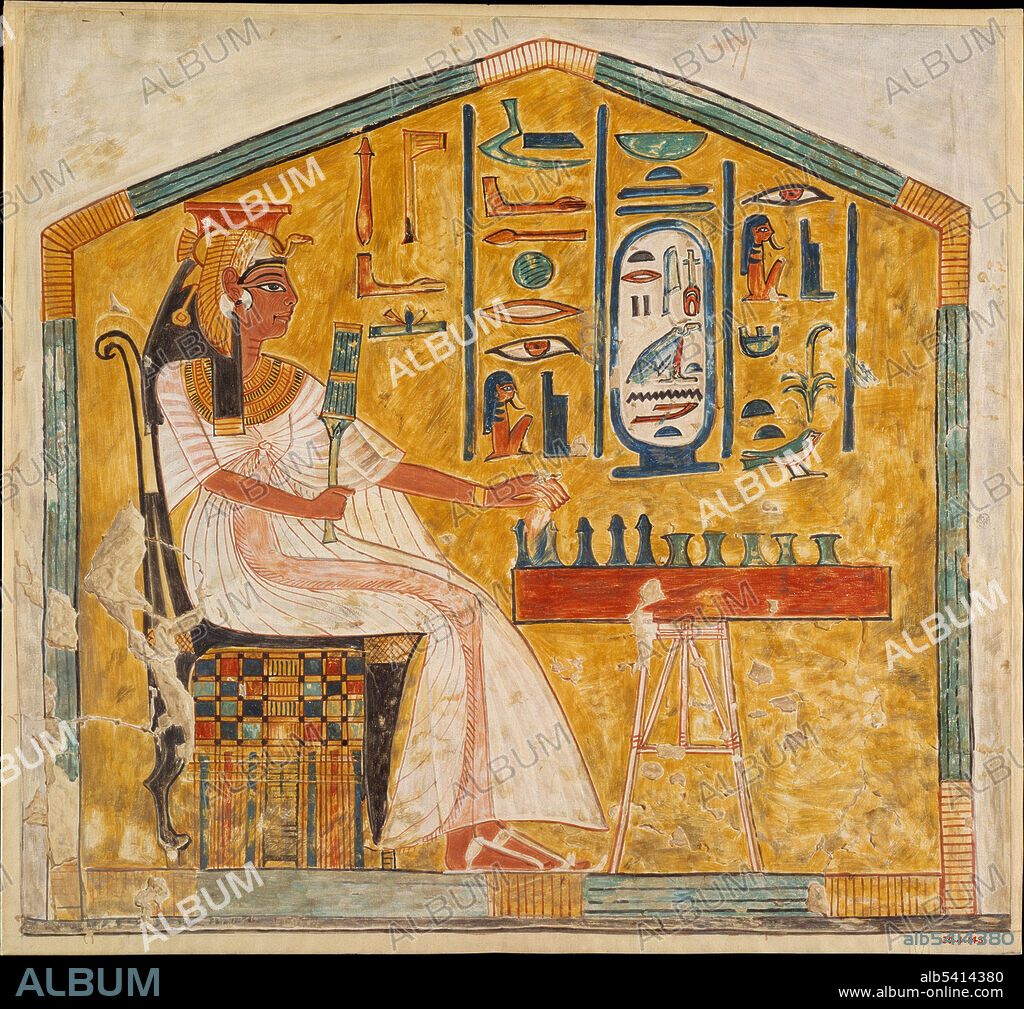alb5414380
Egyptian tomb scene, illustration

|
Añadir a otro lightbox |
|
Añadir a otro lightbox |



¿Ya tienes cuenta? Iniciar sesión
¿No tienes cuenta? Regístrate
Compra esta imagen

Título:
Egyptian tomb scene, illustration
Descripción:
Traducción automática: Escena de la tumba egipcia, ilustración. Esta escena muestra a la reina Nefertari jugando al juego de mesa senet, como se muestra en las paredes de la tumba de Nefertari. Data del Imperio Nuevo (Dinastía 19), durante el reinado de Ramsés II, alrededor de 1279-1213 a.C. Esta tumba se encuentra en el Valle de las Reinas, Tebas, Alto Egipto. Nefertari fue la gran esposa real, o reina principal, de Ramsés II. La reina se sienta frente a una mesa jugando una partida de senet frente a un oponente invisible. Este era un juego popular en vida, pero cuando se representa en una tumba, como aquí, tiene un significado simbólico. La palabra senet significa "pasar" y el juego se consideraba un paralelo al viaje al más allá y a los obstáculos que había que superar en el camino. Nefertari viste un vestido de lino transparente elaboradamente plisado y con flecos. También lleva una pulsera de oro, un collar ancho y lo que probablemente sean aretes de plata. En su cabeza lleva el tocado de buitre de reina. Esta ilustración (tempera sobre papel) fue realizada en 1921-22 por la egiptóloga Nina de Garis Davies (1881-1965) en una expedición para el Museo Metropolitano de Arte.
Egyptian tomb scene, illustration. This scene shows Queen Nefertari playing the board game senet, as depicted on the walls of the tomb of Nefertari. It dates from the New Kingdom (Dynasty 19), during the reign of Ramesses II, in around 1279-1213 BC. This tomb is in the Valley of the Queens, Thebes, Upper Egypt. Nefertari was the Great Royal Wife, or principal queen, of Ramesses II. The queen sits in front of a table playing a game of senet again an invisible opponent. This was a popular game in life, but when represented in a tomb, as here, it has symbolic meaning. The word senet means 'passing' and the game was seen as a parallel to the journey into the afterlife and the obstacles one had to overcome on the way. Nefertari wears an elaborately pleated and fringed gown of sheer linen. She also wears a gold bracelet, a broad collar, and what are probably silver earrings. On her head is the vulture headdress of a queen. This illustration (tempera on paper) was produced in 1921-22 by Egyptologist Nina de Garis Davies (1881-1965) on an expedition for the Metropolitan Museum of Art.
Crédito:
Album / Science Source / Metropolitan Museum of Art
Autorizaciones:
Modelo: No - Propiedad: No
¿Preguntas relacionadas con los derechos?
¿Preguntas relacionadas con los derechos?
Tamaño imagen:
3100 x 2893 px | 25.7 MB
Tamaño impresión:
26.2 x 24.5 cm | 10.3 x 9.6 in (300 dpi)
Palabras clave:
1921 • 1922 • 90S • AFRICA DEL NORTE • AFRICA • AFRICANO • ANTIGUO EGIPTO • ANTIGÜEDAD • ARQUEOLOGIA • ARTE • AÑOS NOVENTA • DECADA NOVENTA • EGIPCIO • EGIPTO • EGIPTOLOGIA • ESCENA • FARAÓNICO • HISTORIA • JUEGO DE MESA • JUEGO • JUGANDO • NADIE • REALEZA • REINA NEFERTARI • REINO NUEVO • RELIGION • SEGUNDO MILENIO AC • SIGLO XX • SIMBOLO • TEBAS • TOCADO • TUMBA DE NEFERTARI • TUMBA • VALLE DE LAS REINAS
 Pinterest
Pinterest Twitter
Twitter Facebook
Facebook Copiar enlace
Copiar enlace Email
Email
